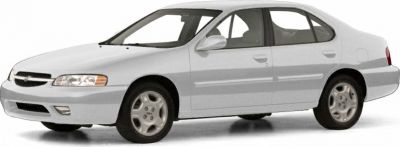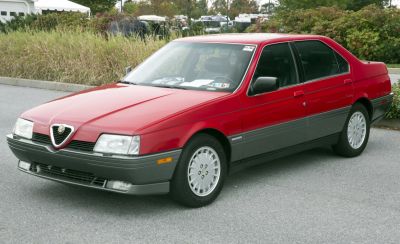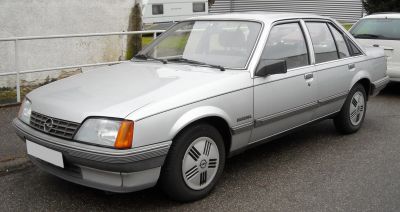 2002 Mazda 6 I Sedan (Typ GG/GY/GG1) Dimensions, Size & Specs
2002 Mazda 6 I Sedan (Typ GG/GY/GG1) Dimensions, Size & SpecsMeasurements of the 2002 Mazda 6 I Sedan, engineered for optimal performance and comfort
| Dimensions | |
|---|---|
| Length: | 4680-4745 mm184.3-186.8 in15.4-15.6 ft |
| Width: | 1780 mm70.1 in5.8 ft |
| Height: | 1440 mm56.7 in4.7 ft |
| Ground Clearance: | 130 mm5.1 in0.4 ft |
| Trunk Capacity: | 430-500 liter15.2-17.7 cu ft |
| Weight Specifications | |
| Curb Weight: | 1270-1518 kg2800-3347 lbs |
| Maximal permitted Weight: | 1815-1958 kg4001-4317 lbs |
| Tire Specifications | |
| Rims Sizes: | 17-inch rims:
|
| Tire Sizes: |
|
The Mazda 6 I Sedan (Typ GG/GY/GG1), produced between 2002 and 2005, represents Mazda's midsize sedan offering in the early 2000s. This generation of the Mazda 6 is characterized by its balanced proportions and practical dimensions that cater to both comfort and performance enthusiasts. The vehicle length varies between 4680 mm and 4745 mm (184.3 to 186.8 inches), with a consistent width of 1780 mm (70.1 inches), offering a spacious cabin without sacrificing maneuverability. The height ranges from 1435 mm to 1440 mm (56.5 to 56.7 inches), providing a sleek sedan profile that still accommodates ample headroom.
Weight specifications vary depending on configuration and trim, with curb weights spanning from 1270 kg to 1518 kg (2798 to 3346 lbs), while the maximum weight capacity extends from 1815 kg to 1958 kg (4003 to 4317 lbs), reflecting the car’s robust build and load capability. The Mazda 6 I sedan features a ground clearance of 130 mm (5.1 inches), striking a good balance between sporty handling and everyday usability.
For practical day-to-day needs, the luggage compartment ranges between 430 liters and 500 liters (15.2 to 17.7 cubic feet), making it suitable for family trips or grocery hauls. Wheel options include 15, 16, and 17-inch rims, with several tire sizes to optimize driving dynamics—such as 215/45 R17 V, 205/55 R16 V, and 195/65 R15 H—giving the driver options tailored to comfort or sportier handling.
Overall, the Mazda 6 I Sedan (Typ GG/GY/GG1) from 2002 to 2005 blends elegant midsize sedan proportions with versatile size attributes that made it a popular choice in its segment. It remains a relevant benchmark for car size comparison for those interested in early 2000s sedan dimensions and performance.
Discover the standout features that make the 2002 Mazda 6 I Sedan a leader in its class
Have a question? Please check our knowledgebase first.
The Mazda 6 I Sedan (Typ GG/GY/GG1) produced from 2002 to 2005 has an overall length ranging from 4680 mm to 4745 mm (184.3 inches to 186.8 inches). This variance in length depends on specific model configurations and trim levels within the generation. The length provides a good balance between interior space and exterior maneuverability, making it comfortable for both city driving and longer trips.
The Mazda 6 I Sedan from model years 2002 to 2005 has a width of 1780 mm (approximately 70.1 inches). This width supports a roomy cabin layout adequate for five passengers, ensuring comfortable seating in both front and rear rows. The width also plays a key role in the vehicle's stability on the road, helping to improve handling and cornering capabilities without making the car too bulky for typical urban environments.
This Mazda 6 generation stands between 1435 mm and 1440 mm tall (56.5 inches to 56.7 inches). The relatively low height contributes to its sleek sedan profile which enhances aerodynamic efficiency. Despite the low roofline, the design allows for good driver visibility and a comfortable headroom space inside the passenger compartment, balancing sporty aesthetics with practicality for everyday use.
The curb weight of the 2002-2005 Mazda 6 I Sedan ranges from 1270 kg to 1518 kg (approximately 2798 lbs to 3346 lbs). This range accounts for various engine options, trim levels, and additional equipment fitted to different versions. The weight influences the car's performance, fuel economy, and handling, with a lighter curb weight typically favoring more agile driving dynamics and improved fuel efficiency.
The maximum gross vehicle weight (GVW) for the Mazda 6 I Sedan varies between 1815 kg and 1958 kg (approximately 4002 lbs to 4316 lbs). This figure includes the car's curb weight along with passengers, cargo, and optional equipment. Knowing GVW is important for maintaining safety, efficient handling, and compliance with road regulations, ensuring the vehicle performs well without being overloaded.
The luggage compartment of the Mazda 6 I Sedan offers between 430 liters and 500 liters (about 15.2 to 17.7 cubic feet) of storage space. This range depends on specific model variants and whether the rear seats are folded. The reasonably large trunk capacity supports family and daily usage needs, allowing users to transport groceries, suitcases, or sports equipment easily.
The Mazda 6 I Sedan maintains a ground clearance of 130 mm (approximately 5.1 inches). This height allows the car to handle typical road obstacles such as speed bumps and uneven surfaces comfortably. The 130 mm ground clearance balances aerodynamic performance with practical usability, offering a sporty ride while reducing the risk of underbody damage in daily driving environments.
Yes, the Mazda 6 I Sedan model years 2002 to 2005 generally fits comfortably into a standard garage. With its length between 4680 mm and 4745 mm (about 15.4 to 15.6 feet), width of 1780 mm (5.8 feet), and height around 1440 mm (4.7 feet), it is compatible with the typical garage dimensions found in most homes. Owners should, however, ensure adequate clearance for opening doors and maneuvering within tighter spaces.
Compared to its predecessor, the Mazda 626, the Mazda 6 I Sedan introduced from 2002 to 2005 is generally larger in most dimensions. It offers a longer overall length (up by approximately 100-200 mm), a wider body, and a slightly lower height which contributes to a sportier, more aerodynamic design. This dimensional growth resulted in increased interior space, improved luggage capacity, and a more modern appearance, making it a significant upgrade in Mazda’s sedan lineup.
In comparison with other mid-size sedans from the early 2000s, such as the Honda Accord and Toyota Camry, the Mazda 6 I Sedan holds its own dimensionally. Its length of 4680-4745 mm places it in a competitive position, slightly longer than some competitors. The width at 1780 mm is on par with typical mid-size sedans, providing balanced interior space. Its lower height and relatively light curb weight give it a sportier edge in handling, while trunk capacity ranging from 430 to 500 liters is comparable or slightly better than some rivals, making the Mazda 6 a strong contender in its segment.
Discover similar sized cars.

| Production: | 1998-2002 |
|---|---|
| Model Year: | 1998 |
| Length: | 4660 mm183.5 in |
| Width: | 1760 mm69.3 in |
| Height: | 1420 mm55.9 in |

| Production: | 1987-1998 |
|---|---|
| Model Year: | 1987 |
| Length: | 4550-4670 mm179.1-183.9 in |
| Width: | 1760 mm69.3 in |
| Height: | 1356-1400 mm53.4-55.1 in |

| Production: | 1982-1986 |
|---|---|
| Model Year: | 1982 |
| Length: | 4652 mm183.1 in |
| Width: | 1726 mm68.0 in |
| Height: | 1420 mm55.9 in |

| Production: | 2018-2020 |
|---|---|
| Model Year: | 2018 |
| Length: | 4720 mm185.8 in |
| Width: | 1815 mm71.5 in |
| Height: | 1465 mm57.7 in |

| Production: | 2014-2018 |
|---|---|
| Model Year: | 2014 |
| Length: | 4720 mm185.8 in |
| Width: | 1815 mm71.5 in |
| Height: | 1465 mm57.7 in |

| Model Year: | 2025 |
|---|---|
| Length: | 4730 mm186.2 in |
| Width: | 1860 mm73.2 in |
| Height: | 1480 mm58.3 in |

| Production: | 2023-present |
|---|---|
| Model Year: | 2023 |
| Length: | 4725 mm186.0 in |
| Width: | 1835 mm72.2 in |
| Height: | 1480 mm58.3 in |

| Production: | 1973-1976 |
|---|---|
| Model Year: | 1974 |
| Length: | 4600-4635 mm181.1-182.5 in |
| Width: | 1729 mm68.1 in |
| Height: | 1421 mm55.9 in |
